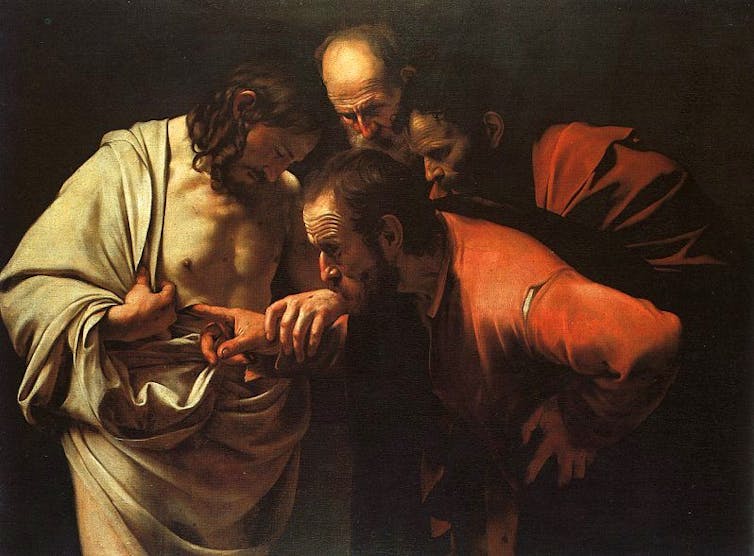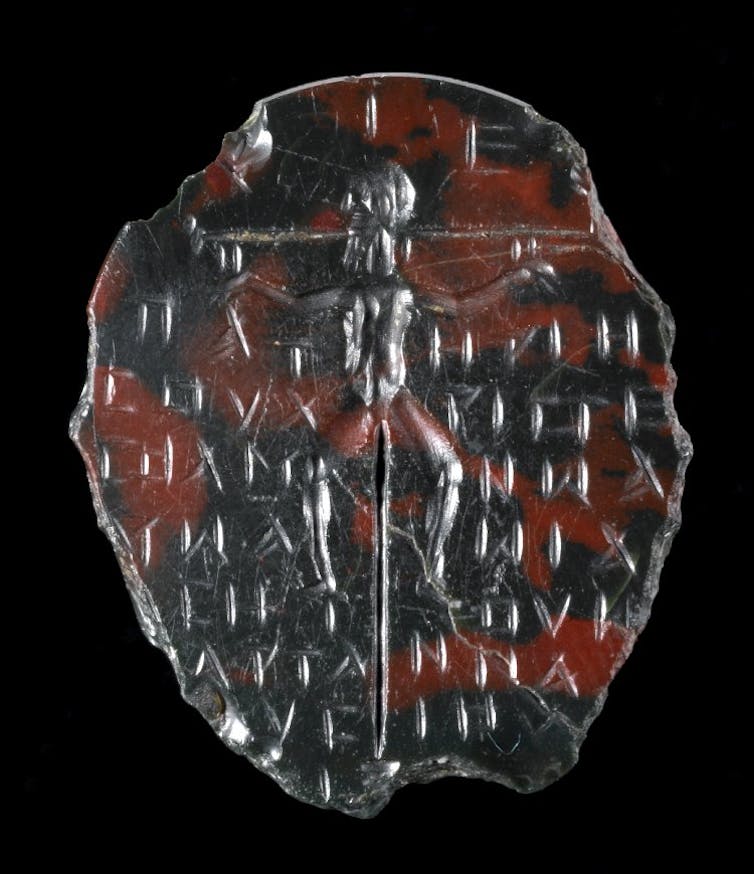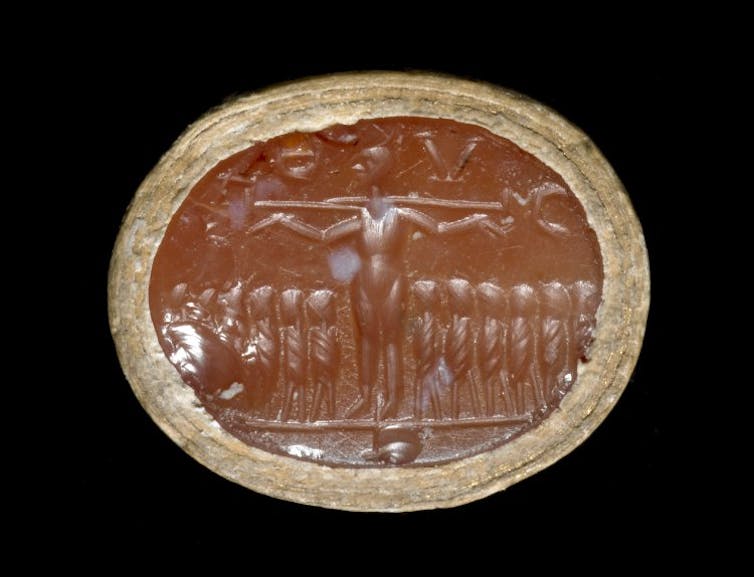Who Nailed Jesus Christ To The Cross
Jesus'southward crucifixion is probably i of the nigh familiar images to emerge from Christianity. Practiced Fri, ane of the holiest days in the Christian calendar, marks the result. But what was crucifixion? And why was Jesus killed that way?
Crucifixion was a Roman method of punishment. Suspended from a large cross, a victim would somewhen die from asphyxiation or burnout – it was long, drawn-out, and painful. It was used to publicly humiliate slaves and criminals (non always to impale them), and as an execution method was usually reserved for individuals of very depression status or those whose criminal offense was confronting the state. This is the reason given in the Gospels for Jesus'south crucifixion: as Rex of the Jews, Jesus challenged Roman royal supremacy (Matt 27:37; Marker xv:26; Luke 23:38; John 19:19–22).
Crucifixion could be carried out in a number of ways. In Christian tradition, nailing the limbs to the wood of the cantankerous is assumed, with debate centring on whether nails would pierce easily or the more structurally sound wrists. But Romans did not always nail crucifixion victims to their crosses, and instead sometimes tied them in identify with rope. In fact, the only archaeological evidence for the practice of nailing crucifixion victims is an talocrural joint bone from the tomb of Jehohanan, a man executed in the first century CE.
Then was Jesus nailed to the cross?
Gospel accounts
Some early Gospels, such equally the Gospel of Thomas, don't include the narrative of Jesus's crucifixion, choosing instead to focus on his education. But Jesus's death by crucifixion is ane of the things that all four canonical Gospels concord on. Matthew, Mark, Luke, and John, all include the crucifixion upshot in their own slightly different ways.
None of the Gospels in the New Testament mentions whether Jesus was nailed or tied to the cross. Nonetheless, the Gospel of John reports wounds in the risen Jesus's hands. It is this passage, perhaps, that has led to the overwhelming tradition that Jesus'southward hands and feet were nailed to the cross, rather than tied to it.

The Gospel of Peter, a non-canonical gospel from the get-go or second century CE, specifically describes in verse 21 how subsequently Jesus had died, the nails were removed from his hands. The Gospel of Peter too famously includes the cross itself as an active character in the Passion narrative. In verses 41-42 the cross speaks, responding with its ain vocalisation to God: "And they were hearing a voice from the heavens saying, 'Accept y'all made proclamation to the fallen-asleep?' And an obeisance was heard from the cross, 'Yes.'" Tradition is clearly of paramount importance to this text.
Over the past few years, several people accept claimed to take establish the bodily nails with which Jesus was crucified. Each time, biblical scholars and archaeologists have rightly pointed out the assumptions and misinterpretations of evidence backside these claims. Curiously, this fixation on the nails persists, despite the fact that the earliest gospels make no mention of Jesus being nailed to the cross.
Depictions of the crucifixion
It isn't surprising that Christians took a while to embrace the image of Christ on the cross, given that crucifixion was a humiliating way to die. What is surprising is what the earliest image of the crucifixion turns out to be. Rather than the devotional icons with which we are familiar – pictures that glorify Jesus'due south death – this primeval image appears to be some late second-century graffiti mocking Christians.

Called the Alexamenos Graffito, the image shows a figure with the head of a ass on a cross with the words: "Alexamenos worships his God." This was apparently a common allegation in antiquity, as Minucius Felix(Octavius 9.3; 28.7) and Tertullian (Apology 16.12) both attest. Since the graffito was clearly non made by a Christian, this image suggests that non-Christians were familiar with some cadre elements of Christian belief as early on as the second century.
Gemstones, some used for magical purposes, also provide some of our primeval depictions of the crucified Jesus. This 2d or third century piece of carved jasper depicts a man on a cross surrounded past magic words.

Some other very early on prototype of the crucifixion is found carved into the confront of a carnelian gemstone made into a ring.

Scholars think that the Constanza gemstone, as it is known, dates from the quaternary century CE. In this delineation, Jesus's hands do not appear to be nailed to the cross, since they autumn naturally, as if he is tied at the wrists.
Since the bear witness from antiquity doesn't provide a articulate reply equally to whether Jesus was nailed or tied to his cantankerous, it's tradition that dictates this mutual depiction. Those who accept seen the picture show The Passion of the Christ volition recall how much fourth dimension the managing director, Mel Gibson, devoted simply to the act of nailing Jesus onto the cross —- near five whole minutes.
Given the relative silence on the act of crucifixion in the Gospels, this stands out every bit a graphic expansion. One of the merely films that does not assume that crucifixion involved nails is Monty Python's Life of Brian, which shows multiple crucifixion victims, though not Jesus, tied to their crosses.
Somewhen, Emperor Constantine put an end to crucifixion as a method of execution, not for ethical reasons, merely out of respect for Jesus. Only in the terminate, information technology is the enduring image of the cross, and not the thing of whether nails or ropes were used, that near firmly evokes the death of Jesus in art and tradition.
Source: https://theconversation.com/was-jesus-really-nailed-to-the-cross-56321
Posted by: hernandezmeare1990.blogspot.com

0 Response to "Who Nailed Jesus Christ To The Cross"
Post a Comment